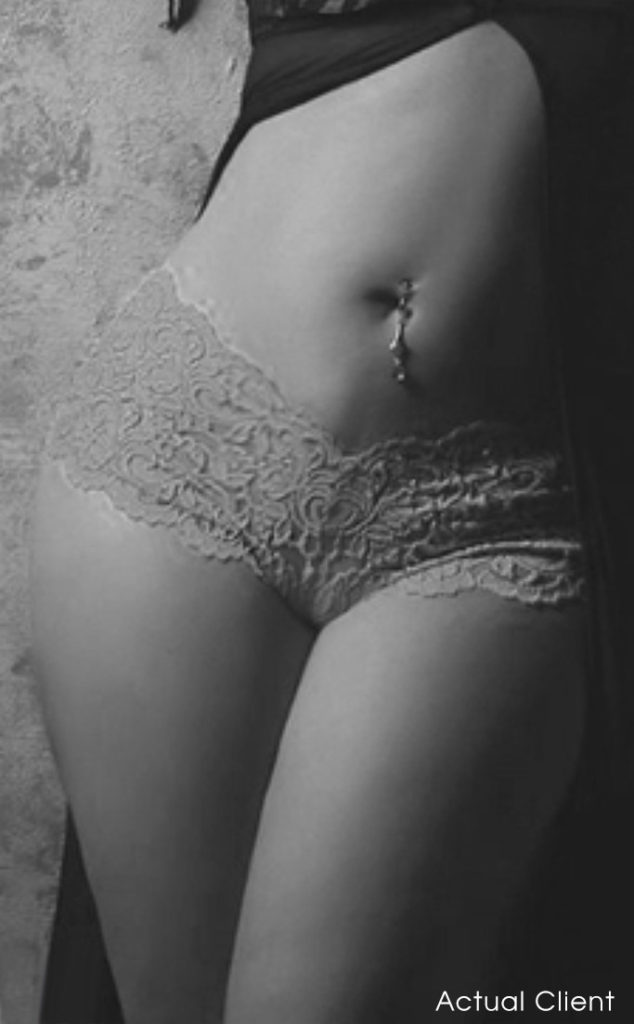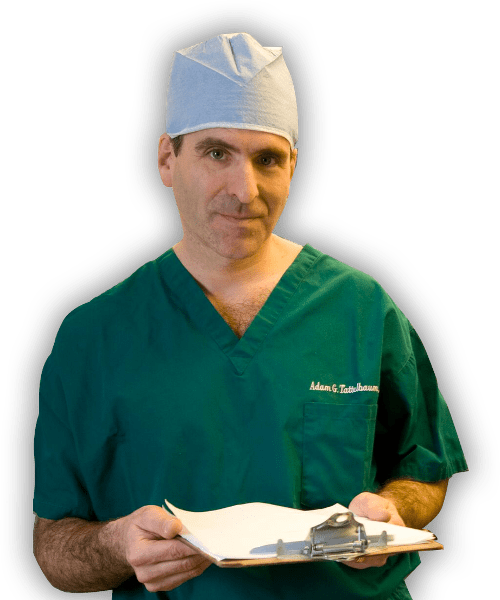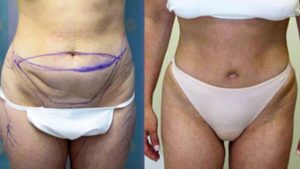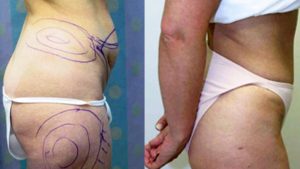Tummy Tuck Surgery
Flatten, tighten and rejuvenate your stomach with a tummy tuck in Maryland.
Get in touch with Dr. Adam Tattelbaum, an experienced, board-certified plastic surgeon, to book a free tummy tuck consultation.
Our practice is based in Rockville, MD, and we welcome patients from Maryland, Northern Virginia and Washington DC.

A Word From The Doctor
“If you’ve landed on this page then, without doubt, you have struggled with which solution is best for your tummy.
No one goes to the tummy tuck page first.
Most desperately hope that the solution is the simple wave of a liposuction wand. But the key difference is this – liposuction is about the fat, whereas a tummy tuck is about the skin.
If your skin is loose, liposuction will just make it looser and more irregular. In such a situation, only a tummy tuck can help.
Below, we discuss whether you need a tummy tuck at all and, if you do, which kind of procedure makes sense for you.”
Written By Dr. Adam Tattelbaum

Why choose Dr. Tattelbaum?
- Double board-certified plastic surgeon
- Member of the American Society of Plastic Surgeons
- Member of the American Society for Aesthetic Plastic Surgery
- Listed in “America’s Top Surgeons” by the Consumer Research Council of America
What Is A Tummy Tuck?
A tummy tuck procedure, known as abdominoplasty within the plastic surgery industry, is a procedure to flatten, tighten and improve the appearance of the abdomen. There are several types of abdominoplasty, each with different purposes and outcomes, but they all remove excess fat or sagging skin from the tummy area.
Patients looking for a tummy tuck in Maryland often have concerns about excess skin due to pregnancy or weight loss, weakened or loose abdominal muscles, or stubborn fat. It’s crucially important to book a consultation with a specialist plastic surgeon and have your individual needs assessed.
Regain your pre-pregnancy body
Remove excess skin after weight loss
Achieve a flatter, tightened abdomen
Dr Tattelbaum’s Perspective
“Many people think tummy tuck patients should simply “work it off” rather than resort to surgery. Most of my patients are already doing everything they can – they diet and exercise, and the majority are quite slender.
The paradox is that when these patients do everything right they lose body fat, and when they lose body fat the loose skin actually gets looser, not tighter. You can work off fat, but you can’t work off loose skin. The gym won’t help with loose skin.”
Am I A Suitable Candidate For A Tummy Tuck?
To be a suitable tummy tuck candidate should be healthy and close to their ideal body weight. Some patients with well-controlled medical disorders can still be candidates. Each patient is evaluated individually to minimize risk and, hopefully, maximize benefit.
Tummy tuck candidates should be at a healthy weight before surgery. This is because the risks of surgery are heightened for heavier individuals.
What Are The Different Types Of Tummy Tucks?
There are several different types of tummy tuck. The right type for you will depend on amount of excess skin that needs to be removed.
Dr Tattelbaum’s Perspective
“In your consultation, I will perform a pinch test. With the patient sitting and standing, I grasp the skin of the lower abdomen to see how loose it is.
If I can grab an entire roll of fat from beneath the belly button, that patient will benefit most from a full tummy tuck. If I can only grasp a small pinch of skin, that patient may only need liposuction or a mini tummy tuck.”
Full Tummy Tuck
A full tummy tuck is only for patients with a lot of excess skin or abdominal muscles that are significantly separated from the belly button.
This is because it removes more skin and tightens the abdominal wall from top to bottom. In the procedure, the upper abdominal skin is pulled down to the pubic area, and a new hole is made for the belly button.
Mini Tummy Tuck
A mini tummy tuck only removes skin from below the belly button. This is more suitable for patients with little excess skin in the pinch test.
Sometimes, it involves tightening the muscle from the belly button and below. The belly button is tugged downward but left intact. It often (but not always) leaves a shorter scar.
Non-Muscle Tightening Tummy Tuck
Tightening abdominal muscles during can cause discomfort after abdominoplasty surgery, so some patients choose to avoid it. This leads to a quicker recovery and a faster return to work, but some patients are unsuitable candidates.
Plus, most patients choose muscle tightening so they can flatten the abdominal wall as much as possible.
Umbilical Float
In tall patients, the skin above the belly button may not be loose enough to pull down to the pubic area. In this case, the belly button can be released from the abdominal wall and pulled down with the skin. We call this an umbilical float.
Patients must be chosen carefully for an umbilical float because the belly button will be significantly lower.
Panniculectomy
In a tummy tuck, sagging abdominal skin is elevated, pulled and stretched down, like fitting a fresh sheet on a bed. For older, heavier, and less healthy patients, this can increase the risk of healing problems.
Instead, a panniculectomy is an alternative procedure that just removes a wedge of skin and fat in the lower abdomen. It does not elevate the skin.
The belly button is removed with a panniculectomy. It sounds strange, but you don’t need it.
TattleTuck
Yes, we made up a name for a special tummy tuck procedure. It’s performed by Dr Tattelbaum on rare occasions, and we’ve never seen anyone else describe it.
The TattleTuck is for moderately tall women with enough skin laxity for a mini tummy tuck, but with muscle separation to the top of the abdomen. In this select group of patients, we do a full muscle tightening, but with only a mini tummy tuck skin excision.
While there is a scar around the belly button, like a full tummy tuck, the belly button is put back in the same place (same hole). In these patients, an umbilical float would bring the belly button down too low.
Fleur de Lis Tummy Tuck
Most people have never heard of a Fleur de Lis tummy tuck. It is mainly used for patients who have experienced massive weight loss.
A standard tummy tuck pulls out extra skin from top to bottom, which is enough for most post-pregnancy patients.
However, massive weight loss patients are not just loose up and down (vertical laxity), they are loose side to side (horizontal laxity). A Fleur de Lis tummy tuck pulls top to bottom and side to side. The downside is that it leaves a verticle scar in the middle of the abdomen. Some patients would rather not have this scar.
Extended/Circumferential Tummy Tuck
Some patients have laxity that extends toward the backside or, in some cases, all around the trunk. Some surgeons call extending toward the backside an extended tummy tuck.
We extend tummy tucks as needed, depending upon the degree of frontal laxity. In select cases, usually after significant weight loss, we will excise skin from the back and front at the same time. This is known as ‘belt lipectomy’.
Tummy Tucks & Liposuction
We commonly perform liposuction of the hip or flank as part of a tummy tuck as it improves the results.
Some patients carry their flank fullness all the way around above the buttocks. For these patients, we may recommend a posterior flank liposuction. This area cannot be reached from the front so, in these patients, the surgery starts face-down.
Fortunately, neither hip nor flank liposuction interferes with the blood supply to the skin we pull down. Some surgeons will liposuction the upper abdominal skin to thin it. We believe this is risky and often unnecessary. Lifting and pulling on the skin as part of a tummy tuck stresses the blood supply, so performing liposuction on this area simultaneously is double the stress, which can lead to healing problems.
If we have a patient with fatty fullness in the upper abdomen, we discuss staged upper abdominal liposuction after the abdomen has healed. It is a much safer option.
For more information, read our post comparing whether you need a tummy tuck or liposuction.
How Long Will The Scar Be?
No patient ever wants a scar, let alone a long scar. However, the scar is a trade-off and you have to ask yourself whether it’s worthwhile.
As plastic surgeons, we are trained to hide scars as best we can. We perform multiple layers of closure, with buried nonreactive sutures to minimize the impact. Unfortunately, even today, genetics still plays a large role in the appearance of a scar.
But, to answer the question, the size of your scar will depend on how loose your skin is and the type of tummy tuck performed:
Looser-skinned people have longer scars than tighter-skinned people.
Those who opt for a mini tummy tuck will have less scarring than other techniques.
How Do You Hide The Scar?
We ask patients to bring in their favorite underwear or bathing suits (no thongs, strings, or laces/frills). Aim for a timeless style about an inch and a half wide on the hip. And makes sure it’s not too expensive, in case we get marker on it.
We will then plan the incisions low in the underwear/bathing suit line because when skin is pulled tight, the pubis and the scar can rise. Every effort is made to keep the scar as low as possible.
For men, we usually plan a more horizontal scar in keeping with their underwear waistband.
What Will Happen To My Belly Button?
The answer to this question differs for each of the tummy tuck techniques. The belly button is unaffected in a mini-tuck, repositioned in an umbilical float, and pulled out of a new hole in a full tuck.
We’ve written a full blog post on the subject, which you can read here:
Do You Use A Drain?
When skin is elevated, tugged on, and put back down as part of the tummy tuck, oozing occurs until the skin sticks to the abdominal wall. This is normal.
However, if this fluid accumulates, it can become infected. A drain is a tube attached to a bulb that sucks the fluid away. We leave at least one drain on patients.
We usually bring it out through the right hip incision. Some surgeons will bring the drain out through the pubis, but we see no need to make an additional scar. In addition, we sew the skin, so it heals more quickly to the abdominal wall. Some surgeons will do this and not leave a drain. However, we believe the drain is a good safety precaution. It usually comes out at the first or second post-operation check-up.
Do You Use A Pain Pump?
A pain pump is a balloon filled with local anesthetic that drizzles the anesthetic under the skin via small tubes placed internally at the time of surgery. The tubes are removed 3-5 days after surgery.
We will place a pump if requested, but we generally prefer not to add additional tubes penetrating the skin.
For most patients, we use a long-acting local anesthetic injected into the tummy while the patients are asleep instead of a pain pump.
How Flat Will I Be?
Your body, a living tissue, is smarter than your doctor. Your tissue responds to tension and will relax if there is too much. We believe two factors contribute to how flat you will stay:
The strength of your tissue – we bring the abdominal muscles back together in a tummy tuck, but we are not sewing the muscles. We are sewing a strong layer of tissue that surrounds the muscle known as fascia. The stronger the fascia, the better it holds. Large or multiple pregnancies can weaken the fascia.
The weight you carry inside your belly – Dolly Parton once said, “You can’t put ten pounds of potatoes in a five-pound bag”. She was referring to a different part of her anatomy, but the same is true for the abdomen.
A slender person with less abdominal weight is likely to stay flattest. Midweight patients will tend to see more relaxation but find an improvement. Full-figured patients may ultimately stretch back to where they were. In all cases, patients and their bodies will find their best abdominal equilibrium.
Will I Be Thin After A Tummy Tuck?
Tummy tuck surgery does not make people thin, it makes them more streamlined.
Whilst it does take away some skin and fat, the weight loss is not as much as you would think. Our organs and muscles are dense and heavy, but fat is not.
It is always best to be at a healthy, stable, and sustainable weight before surgery. If you lose a significant amount of weight after surgery, your skin will get looser again, meaning you could even need a second operation.
Can Men Have Tummy Tucks?
Although tummy tuck procedures are a very common choice for postpartum women, both men and women can undergo a tummy tuck. For men, the procedure is usually performed following significant weight loss.
What Are The Risks Of A Tummy Tuck?
All the risks of abdominoplasty (tummy tucks) are discussed in great detail during a consultation.
Furthermore, consultations are followed up with a consent form that has everything laid out in print.
We make a point to educate patients about the tummy tuck and its risks, but we do everything we can to minimize them.
How Much Does A Tummy Tuck Cost In Maryland?
We understand that one of the main concerns for people considering a tummy tuck is the cost of the procedure. We believe in transparency and, more importantly, that the fee we display should be all-inclusive. Many practices will display a price that seems lower at first but does not include additional costs like the anesthesia fee or the facility fee.
Our tummy tuck surgeries are priced as follows, and they include the cost of the procedure and the anesthesia, surgical, and check-up fees.
| Procedure | Cost |
|---|---|
| Initial Consultation | No fee |
| Full Tummy Tuck | $12,900 |
| Mini Tummy Tuck | $11,900 |
| Fleur de Lis Tummy Tuck | $15,400 |
| Liposuction (First Site) | $5,500 |
| Liposuction (Each Additional Site) | Priced by site. |
Tummy Tuck Preparation
- Note down your objectives, concerns, and questions for Dr. Tattelbaum ahead of the consultation
- Stop smoking, reduce alcohol intake, and maintain a healthy diet in the weeks leading up to surgery
- Exercise regularly and get plenty of rest, this proactive approach will aid recovery afterward
- If you are dieting, do so with a safe and sustainable plan before surgery. Then, try to maintain a stable weight for a while before surgery. If you continue to lose weight until the day of surgery then you won’t have the proper nutrition to heal.
- Organize for someone to take you home and stay with you for a few days after surgery.
- Prepare several meals in advance, so you don’t have to exert yourself after surgery.
Tummy Tuck Recovery
Most patients recover well from a tummy tuck, although there is the usual period of swelling and soreness associated with any surgical procedure.
For a full tummy tuck, the average patient takes roughly two weeks off work. Even so, we recommend taking a third week if you can. It’s nice to have the third week and not need it, rather than the other way around.
Tummy Tuck Results
Want to see before and after pictures from our previous tummy tuck patients?


Location
Patients seeking a tummy tuck can attend our offices in Rockville, MD, or McLean, VA. Most of our patients come from Maryland, northern Virginia and Washington DC.
Get In Touch
To schedule a free consultation for a tummy tuck, please get in touch today.
The consultation lasts for roughly one hour. In the consultation, Dr Tattelbaum will evaluate your health and starting situation and answer any questions you may have.
Related Procedures
Arm Lift
Arm lift surgery targets the fat in the patient’s upper arms and removes excess fat cells to leave a slimmer overall appearance.
Brazilian Butt Lift
BBLs have grown in popularity in recent years. They’re designed to enhance volume and shape by transferring the patient’s own excess fat from one area of their body to the buttocks.
Liposuction
Liposuction is a minimally invasive procedure that removes excess skin and fat from specific areas of the body, achieving a slimmer and more toned appearance.
Massive Weight Loss
This tends to involve a series of procedures to remove the excess skin and fat that’s left behind after a period of significant weight loss.
Mommy Makeover
A combination of surgeries focusing on the breasts and body to combat the changes that occur following pregnancy, leaving the patient with a much more toned, youthful appearance.

